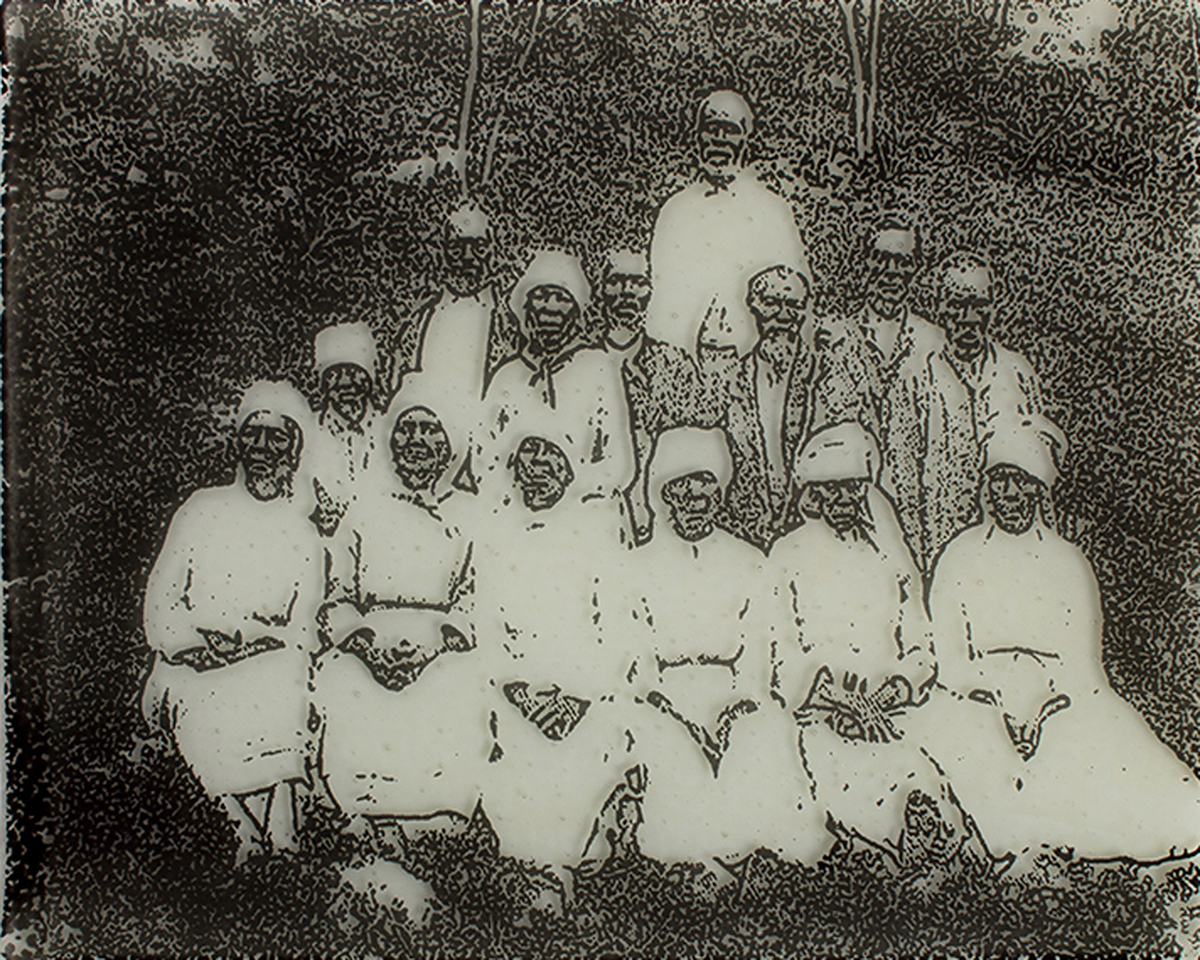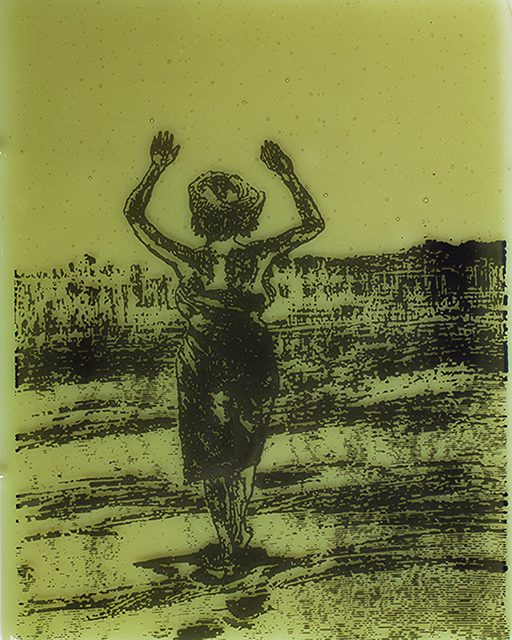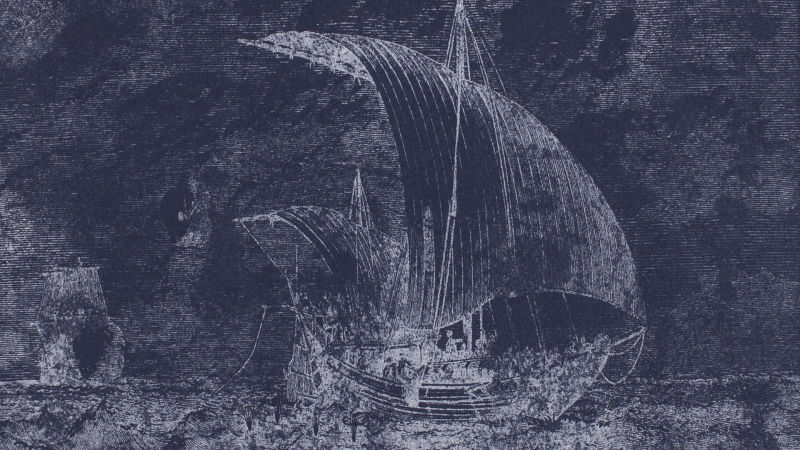Cheryl Patrice Derricotte‘s Ghosts/Ships offers a glimpse into the global African slave trade that is both subtle and direct in its links between past and present, culture and place. Inspired by Fred Wilson’s 1992-1993 project Mining the Museum — in which Wilson paired unlikely images and artifacts for a jolting and honest representation of America’s relationship with slavery — Derricotte mined the British Museum for public domain images related to the global African slave trade, merging them with contemporary mediums.
On display through April 3 at the Museum of the African Diaspora in San Francisco as part of their Emerging Artists Program, Ghosts/Ships invites visitors into a world of haunting images and words rendered in glass, paper and video.

Prominent in the collection are portraits of enslaved people — many women and girls — from various African countries. Cotton is represented in lovely botanical illustrations. Displaying this core symbol of the institution of slavery in such a manner evokes an uneasiness, a stark contrast to other images images in the exhibition: a Sudanese slave and her child, displaced African people crammed aboard the H.M.S. Daphne slave ship.

Derricotte, who is based in Oakland, often incorporates resonant phrases into her work. Using them as titles for etchings or monotypes, she draws links between slavery of “the past” and modern day oppression of African American people. These links are most obvious in two pieces: a kiln formed glass and enamel image of traditional hunting spears titled Tools of Resistance and an unsettling image of a young African woman, facing away, arms raised above her head, titled Hands Up, Don’t Shoot.
Yet what is perhaps the most stunning aspect of Ghosts/Ships is the audio that plays with a video diary of Derricotte’s work. A serene track of an ocean tide ebbing and flowing fills the room, accompanied by images and text:
The thirst for cotton was unquenchable
We tried to fight back
We attempted to avoid being captured
But our boats were smaller
The animals tried to run away
We could not outrun the guns
The plantation became our fate
The work was hard and the days were long
I saved our last picture together
Crossing the stormy ocean
And the ships kept coming
The ships kept coming
Ghosts/Ships is a must see, must hear and must feel experience for anyone looking for a shift in perspective through visual storytelling. History, resistance and old stories in new forms, Ghosts/Ships offers all that and more.


